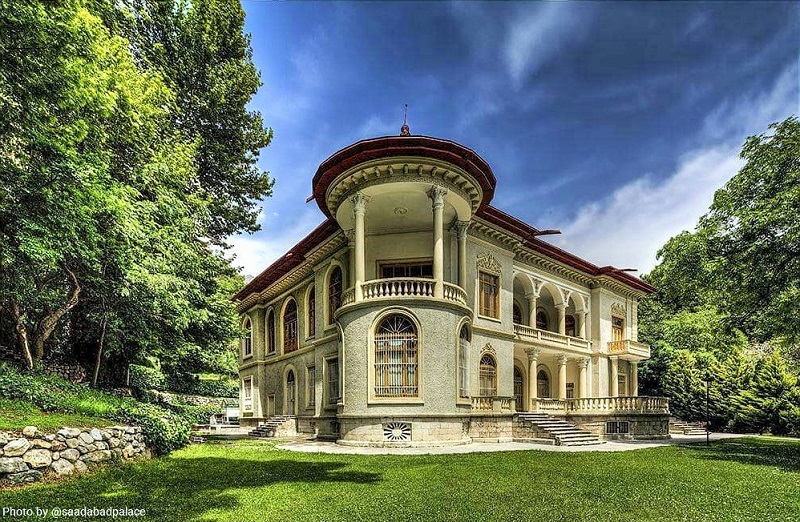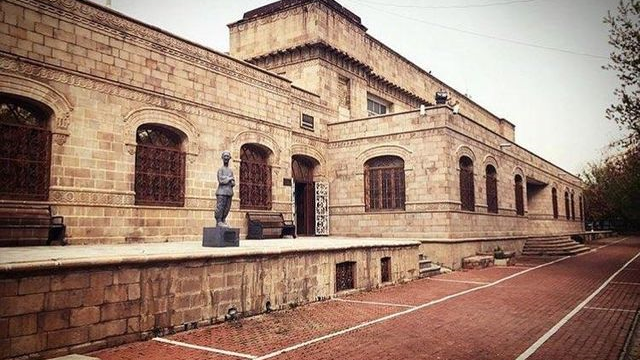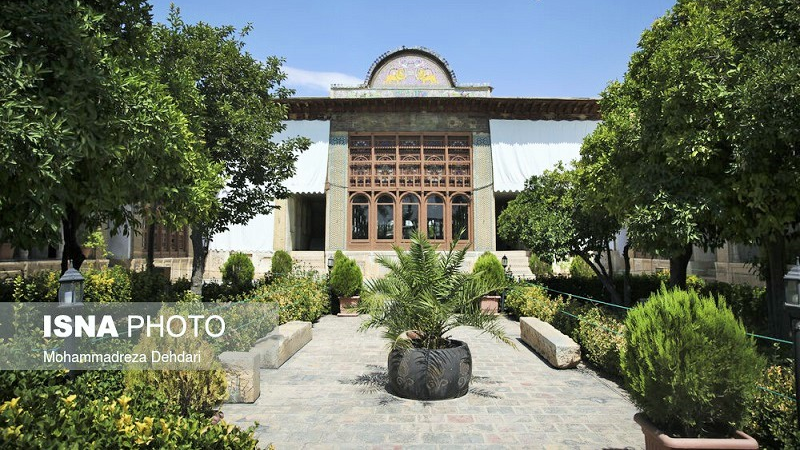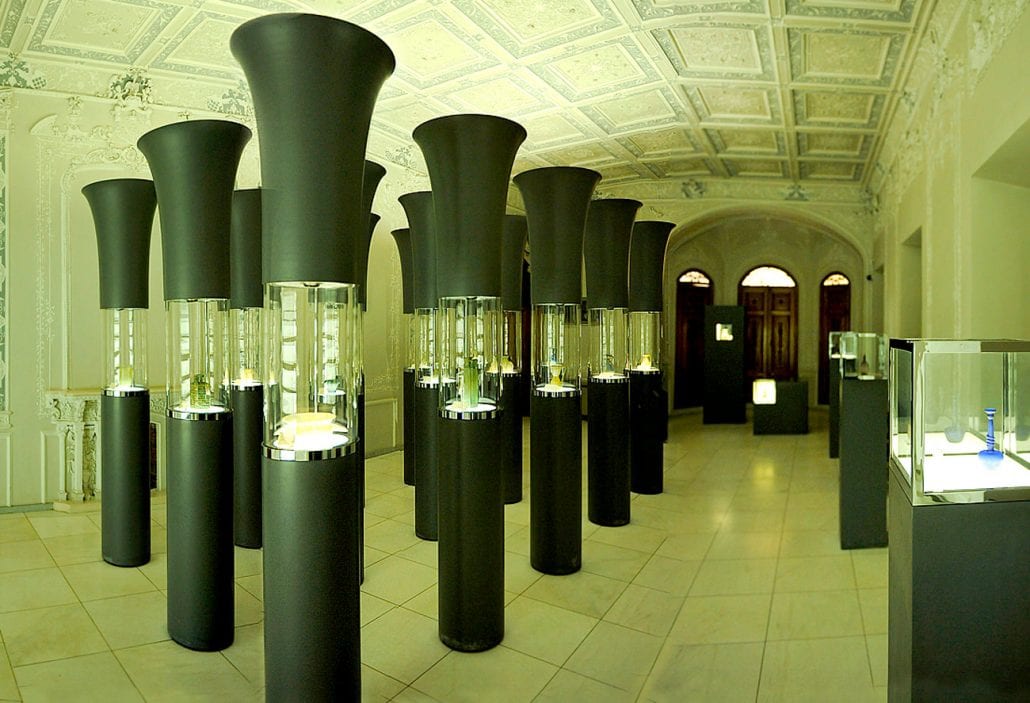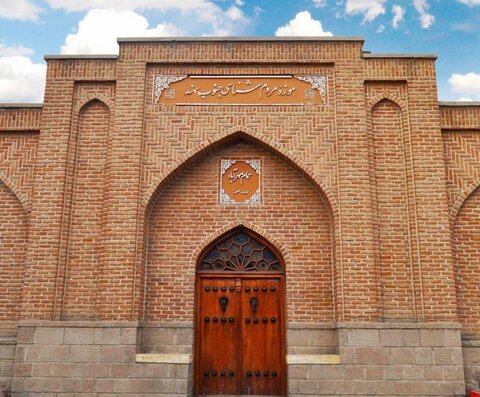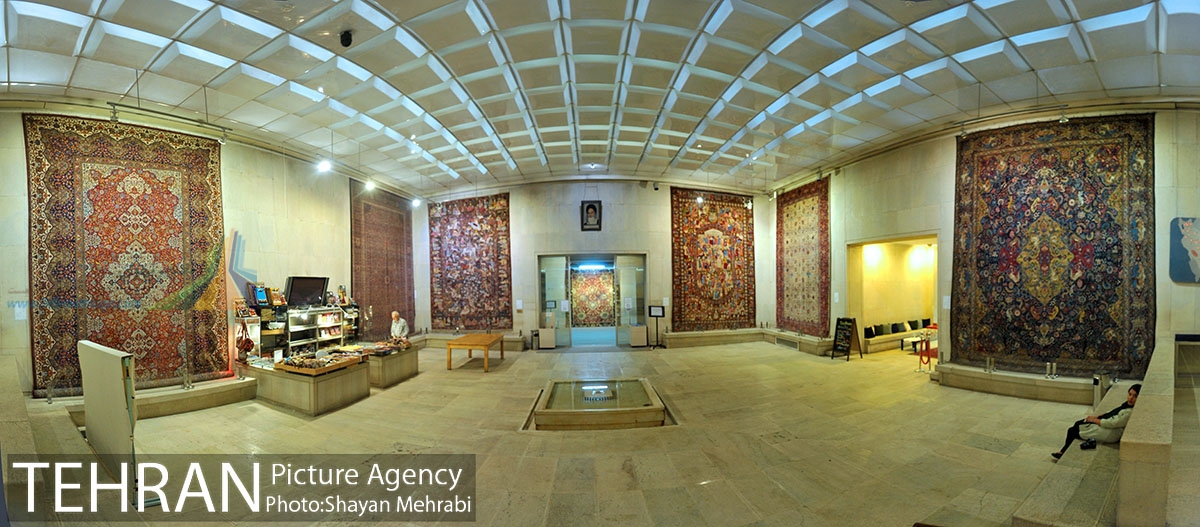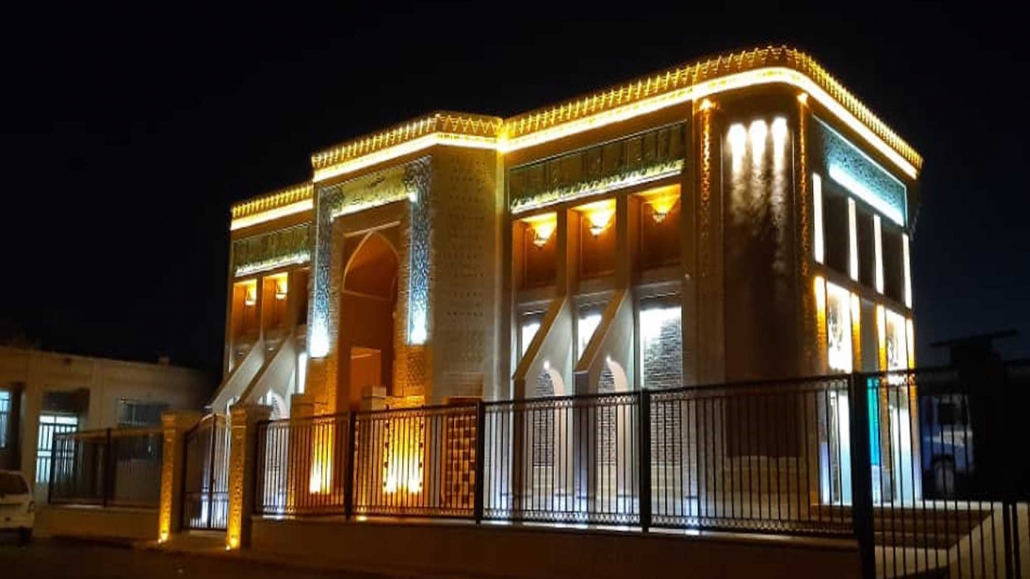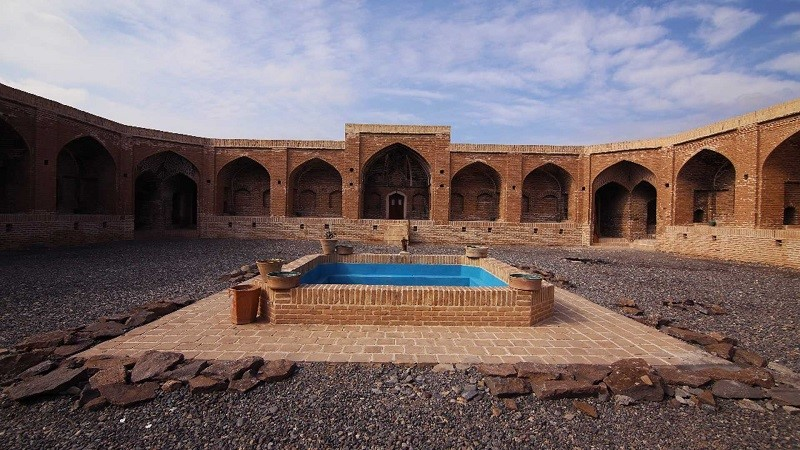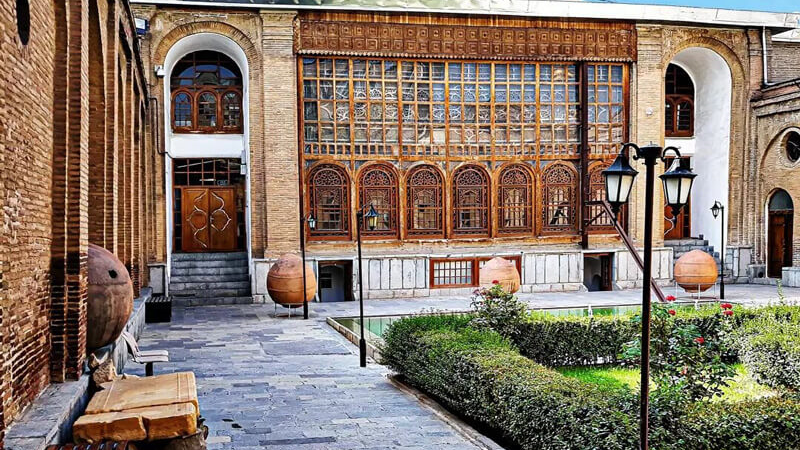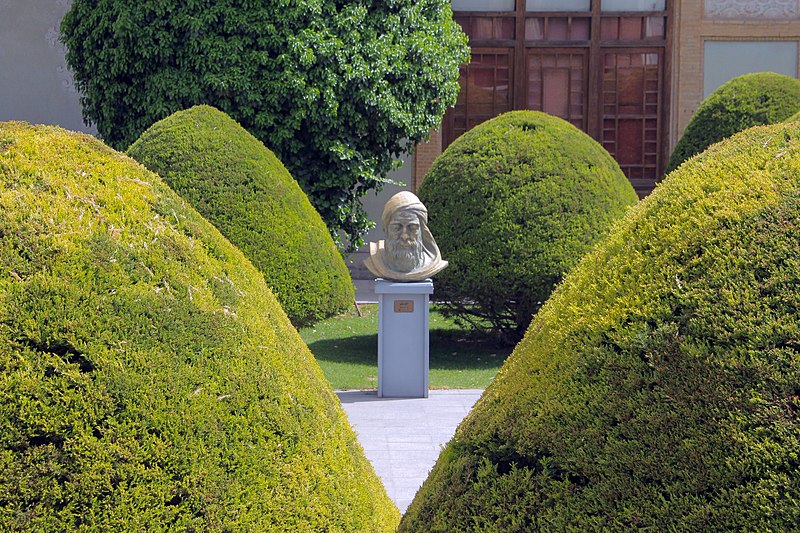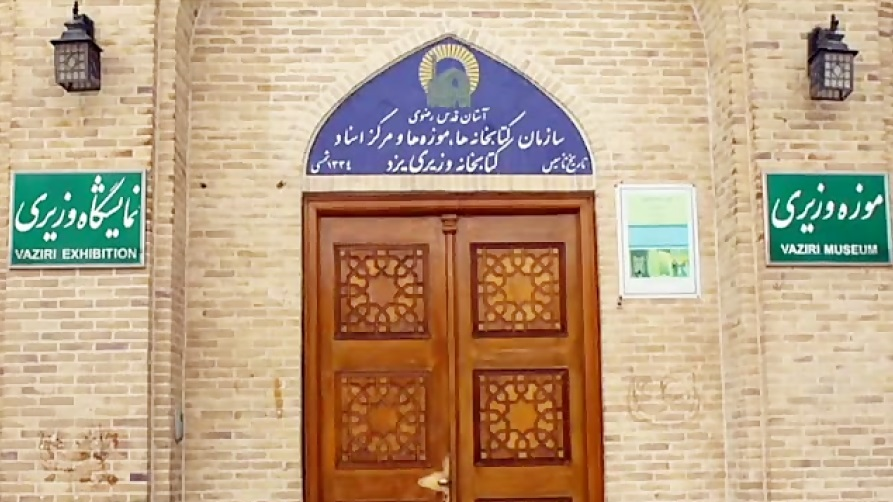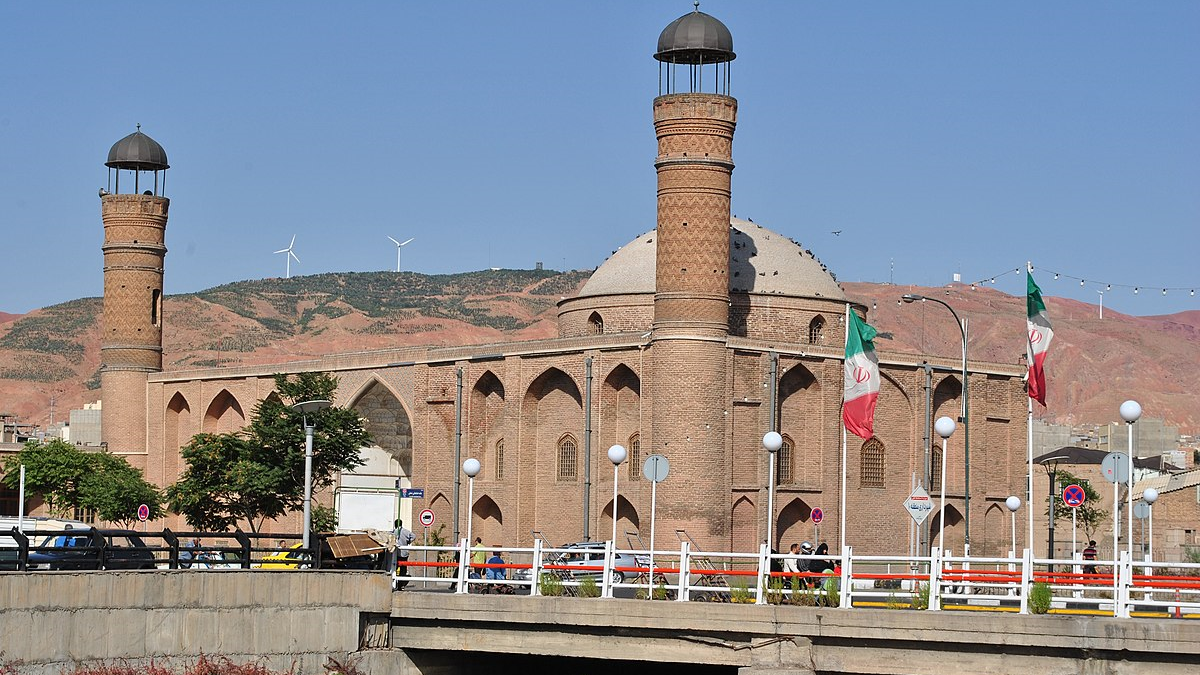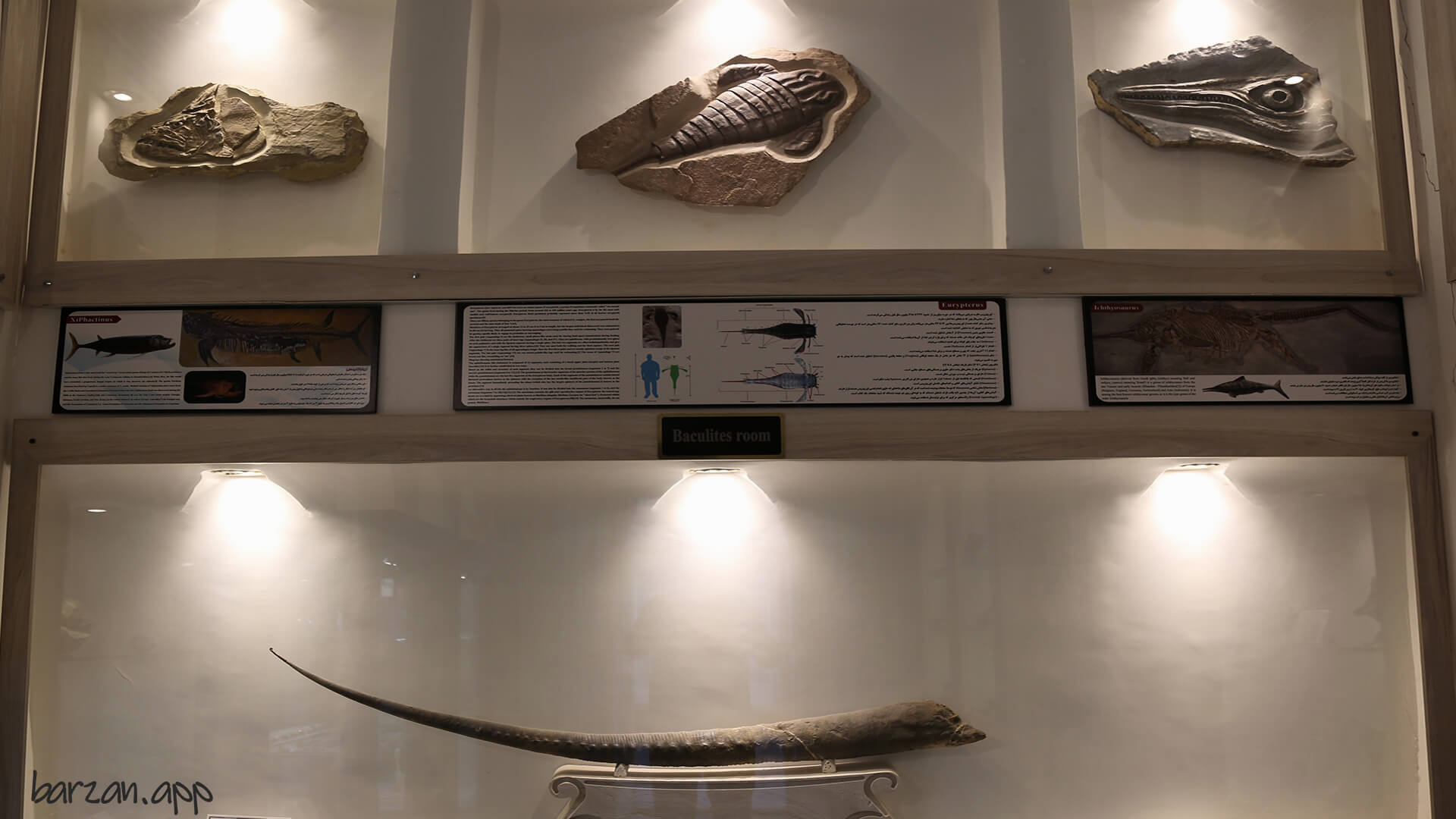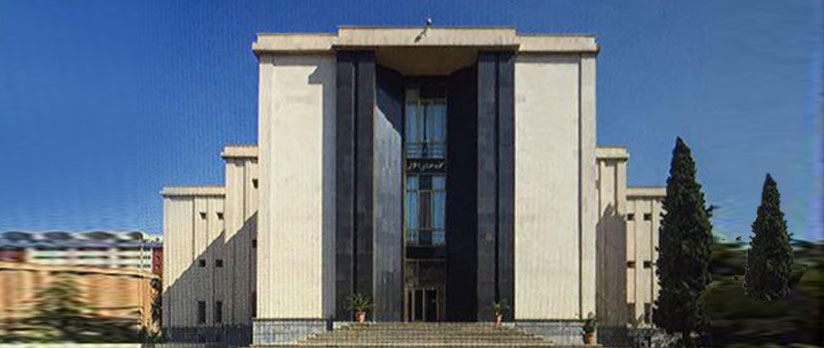
National Museum of Iran
National Museum of Iran
The main entrance of the Museum of Ancient Iran, designed by André Godard, a French architect, in the Sassanian vault style, especially inspired by the Tisfouni iwan.
The National Museum of Iran is a collection of historical and prehistoric Iranian artifacts located in Tehran. The museum consists of two separate buildings: the Museum of Ancient Iran, housing artifacts from the Paleolithic era up to the pre-Islamic period, opened in 1937 (1316 in the Iranian calendar), and the Museum of the Islamic Era, dedicated to archaeological and artistic works from Iran’s Islamic period, opened in 1996 (1375 in the Iranian calendar).
The National Museum of Iran is the country’s most important museum for the preservation, display, and study of Iran’s archaeological collections. The breadth and diversity of its artifacts reflect the country’s vast geography and the multiple prehistoric, historical, and Islamic periods during which humans lived in this land and left their mark. Today, the museum exhibits works that showcase the richness of Iranian culture and civilization, its art, economic development, and technological achievements.
With a history of about eighty years, the National Museum of Iran is not only the largest archaeology and history museum in the country but is also considered the “mother museum” in Iranian museology. Currently, Jebrail Nokandeh serves as its Director General.
Background
For the first time, the idea of establishing a place called a museum was proposed by Morteza Gholi Hedayat, also known as Morteza Gholi Sanie-doleh. He intended to create a museum and an office called the Department of Antiquities to organize and manage archaeological excavations, but he did not achieve this goal.
The first museum was established in 1916 (1295 AH) under the name “National Museum” or “Museum of Knowledge” in one of the large rooms of the Ministry of Education, located on the northern side of the Dar al-Fonun school building. This museum contained 270 items, including bronze, pottery, glassware, coins, ancient weapons, seals, wooden objects, manuscripts, books, and textiles, which had been collected by the employees of the Department of Antiquities or donated by the public.
In 1925 (1304 AH), the museum’s objects were transferred to the Mirror Hall of the Masoudieh Palace. Meanwhile, with the start of archaeological excavations by European archaeologists—particularly the French Archaeological Delegation led by Jacques de Morgan in 1897 (1276 AH) in Susa—the Iranian public became more aware of the importance of their cultural heritage. In 1927 (1306 AH), Iran revoked the unconditional privileges previously granted to the French archaeologists, allowing them to excavate only in Susa. Additionally, as Iran decided to establish a national museum and library, the task of designing and implementing these institutions was given to the French. Accordingly, in 1929 (1308 AH), the French engineer André Godard came to Iran to establish the museum and library and officially began his work.
Construction of the Museum of Islamic Era, aimed at carrying out various cultural activities, began in 1944 (1323 AH) within the grounds of the National Museum of Iran and, after several interruptions, its architecture was completed in 1950 (1329 AH), although finishing touches were postponed to later years. Considering the importance of Islamic-era artifacts, the interior design and execution of the Museum of Islamic Era began in 1991 (1370 AH) with attention to Islamic art and philosophy, and its floor plan was inspired by the Sassanian cross-shaped design. Finally, this museum, covering approximately 10,000 square meters over four floors, was inaugurated in 1996 (1375 AH), with two floors dedicated to exhibiting Islamic art and the other two floors facilitating ancillary activities.
Currently, the National Museum of Iran encompasses both the Museum of Ancient Iran and the Museum of the Islamic Era. Covering a total floor area of approximately 200,000 square meters on an 18,000-square-meter site and housing around 300,000 historical artifacts, it is considered the most important museum in the country and among the richest museums in the world in terms of Iranian culture and art.
The National Museum of Iran houses artifacts from Iran’s prehistoric, historical, and Islamic periods, with the oldest pieces dating back approximately 800,000 years.
Features
The Museum of Ancient Iran (Iran Bastan) has a rich collection of archaeological artifacts, with the oldest dating back to the Paleolithic period (between one million and about 12,000 years ago) and the newest from the Sassanian era, over 1,700 years old. This hall displays unique items from various prehistoric and historical periods.
The oldest hand-made artifacts in the Paleolithic section of the Iran Bastan Hall, made from quartz or mountain stone, come from the Keshf Rud River area east of Mashhad and are over one million years old. Other ancient collections in this section include items from Darband and Ganj Par in Gilan Province and Shiveh To near Mahabad, dating back approximately 700,000 to 200,000 years.
In the museum hall, remarkable artifacts from the Middle and Upper Paleolithic periods, dating between 200,000 and about 12,000 years ago, are also on display. From the Middle Paleolithic, coinciding with the presence of Neanderthals in Iran, tools made of flint and fossilized animal remains from caves in the Zagros region and the Central Plateau—such as Bisotun and Khorramabad caves—are exhibited. The oldest human remains found in Iran, a small molar tooth of a Neanderthal, discovered in Wezmeh Cave, are displayed in the Middle Paleolithic section of the museum.
In the Upper Paleolithic period, which coincides with the spread of modern Homo sapiens in Iran, the production of blade tools became widespread. Bone tools were also made, and personal ornaments such as shell pendants, animal teeth, and ochre were commonly used. One important site from this period is Yafteh Cave in Lorestan, examples of which are displayed in the museum hall. From the subsequent Epipaleolithic period, characterized by the invention of composite tools, the use of grinding stones, and food storage, artifacts from Ali Tappeh Cave (Mazandaran), Shalam Cave (Ilam), and several other sites are exhibited.
From the Neolithic and early village periods, artifacts such as the oldest brick in Iran from Ganj Dareh, the earliest clay figurines of humans and animals from Sarab Hill, and stone tools are displayed in the hall. Important sites from the 5th and 4th millennia BCE (the Chalcolithic or Copper-Stone Age) in Iran include Susa (Khuzestan), Esmailabad and Cheshmeh Ali (Tehran), and Tal-e Bakun (Fars), with examples of their decorated pottery on display. Among the notable motifs from this period is the simplified depiction of a wild goat, seen on the surface of pottery from Esmailabad and Cheshmeh Ali.
Stone vessels from Jiroft and Shahdad, decorated with diverse motifs such as humans battling mythical animals and geometric, animal, and plant designs, are among the prominent examples displayed in the showcases. Another significant artifact from this period in the museum hall is a clay figurine from Shahdad, depicting the upper torso of a nude man with his hands folded over his chest, likely shown in a posture of prayer.
Metal objects from the late Bronze Age and early Iron Age—including vessels, weapons, decorative items, and human and animal figurines—are on display in the hall. Also exhibited are gray, polished, and burnished pottery, vessels with spouted tubes, vessels shaped like humans and animals, rhytons (animal-shaped drinking vessels), and various iron objects.
Some of the objects displayed in the prehistoric section of the hall belong to the Elamite civilization. Numerous artworks have survived from all Elamite periods, particularly from the Middle Elamite period, which is considered one of the most magnificent of the three Elamite eras. The Chogha Zanbil temple is one of the most significant architectural remains from this period, yielding numerous artifacts, including a cow figurine with an inscription, glass tubes, inscribed bricks, and a clay door socket, all of which are exhibited in the hall. The glass tubes from Chogha Zanbil are among the oldest examples of glass in Iran. Other aspects of Elamite art represented in the hall of Ancient Iran include sculpture, decorative vessels made from natural bitumen, relief carvings, cylinder seals, molded relief figurines, glazed bricks, imitation Chinese objects, bronze items, and funerary busts.
Artifacts attributable to the Median period displayed in the museum hall have been obtained from ancient sites such as Nushijan, Hasanlu, Godin, and Babajan. During this period, the production of iron objects expanded, with notable examples being the items from Hasanlu displayed in the hall. Additionally, beautifully glazed ceramics were crafted, a remarkable example of which is the glazed jug from Ziwiyeh, featuring the depiction of two goats on either side of a lotus flower.
The magnificent artifacts of the Achaemenid period are among the outstanding examples in the Museum of Ancient Iran, reflecting the rich art of this era.
The National Museum of Iran includes 10 research departments, a library, and a documentation center:
Paleolithic Department
Prehistoric Department
Historic Department
Islamic Department
Seals and Coins Department
Conservation and Restoration Department
Inscriptions Department
Ceramics Department
Osteology Department
Library and Documentation Center
Goals
The purpose of establishing the National Museum of Iran is to preserve and study the heritage of past generations, present, and transmit it to the future, foster understanding among nations and ethnic groups, highlight their contributions to global culture and civilization, and enhance public knowledge—especially among students, scholars, and researchers. During the 2000s and 2010s, after more than 70 years, the museum underwent major renovations in the Ancient Iran Hall, unveiling many previously unseen artifacts, updating all display cases, and refreshing the accompanying information panels.
| Name | National Museum of Iran |
| Country | Iran |
| State | East Azerbaijan |
| City | Azarshahr |
| Type | Historical |
| info@irannationalmuseum.ir | |
| Website | http://irannationalmuseum.ir/fa/ |
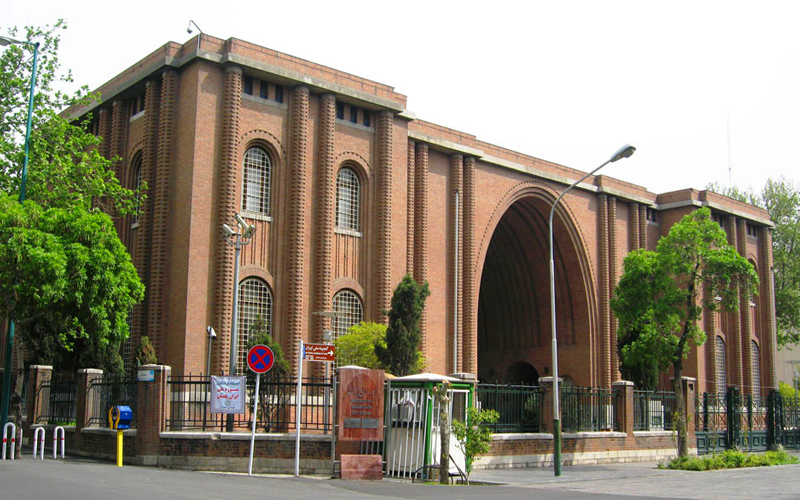


The National Museum of Iran
In the collection of the National Museum of Iran, as the largest, most important and oldest museum in the country, the most archaeological findings from scientific excavations from the Paleolithic to the Islamic period are displayed in the form of two museums, "Ancient Iran" and "Archeology and Islamic Art of Iran". The National Museum of Iran was opened in 1937 in the first building of the country's museums. The building was designed by Andre Godard, a French architect, inspired by the Kasra arch, and was designed by two Iranian architects, Abbas Ali Memar and Professor Morad Tabrizi."Museum of Ancient Iran" includes two museums "Prehistory of Iran" with works from the Paleolithic period to the end of the fourth millennium BC (ie from the earliest period to the invention of writing) and the "Museum of Historical period" with works from the late fourth millennium BC (ie the beginning) The use of writing) has been exhibited until the end of the Sassanid era.
The Museum of Archeology and Islamic Art of Iran was built based on a plan inspired by the Sassanid palace of Bishabour, in the form of an octagonal cross, with an area of about 4,000 square meters and three floors. This building was equipped to establish the Museum of Archeology and Islamic Art of Iran and was inaugurated in 1996.
The ground floor of this building is dedicated to the meeting hall and the temporary exhibition hall. The works of the Museum of Archeology and Islamic Art of Iran are arranged on the first and second floors according to the historical schedule.
The visit begins on the second floor and ends on the first floor. The current museum consists of 6 halls on two floors: the second floor includes the halls of early Islam, Seljuk and Ilkhanid, and the first floor includes the halls of the Quran, Timurids, Safavids, Afshar, Zand and Qajar. Most of the objects in this museum are selected works from scientific excavations or prestigious collections such as Astan Sheikh Safiuddin Ardabili.
| Name | The National Museum of Iran |
| Country | Iran |
| State | East Azerbaijan |
| City | Azarshahr |
| info@irannationalmuseum.ir | |
| Website | https://irannationalmuseum.ir/ |

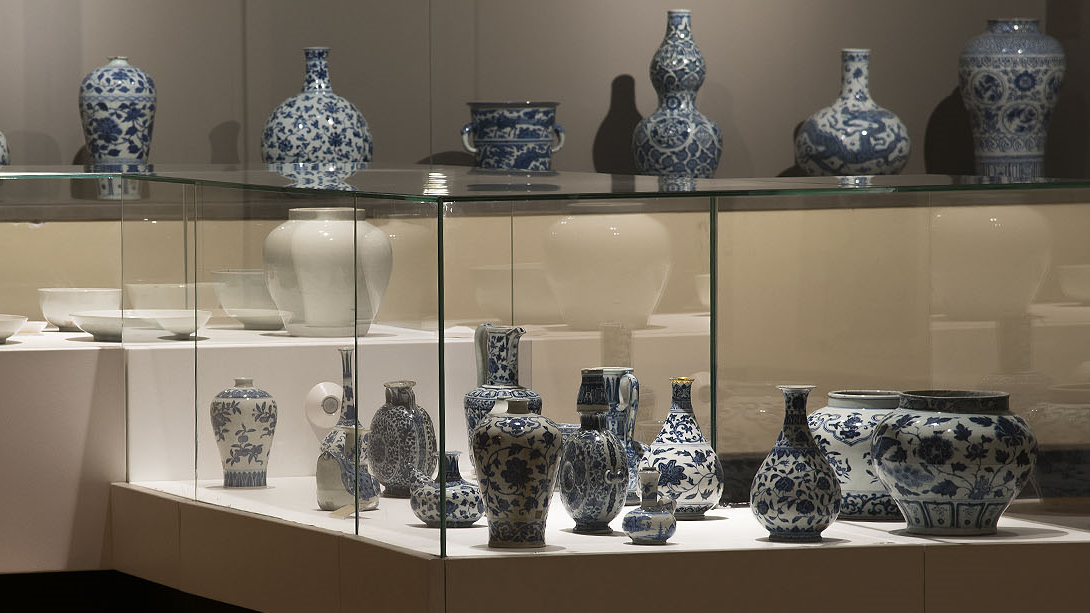
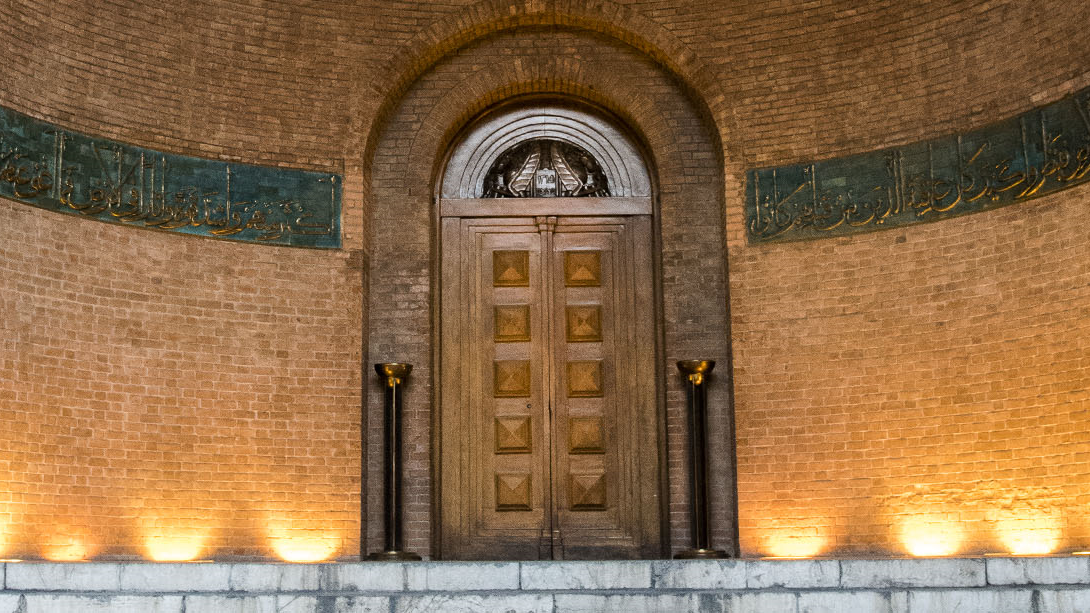
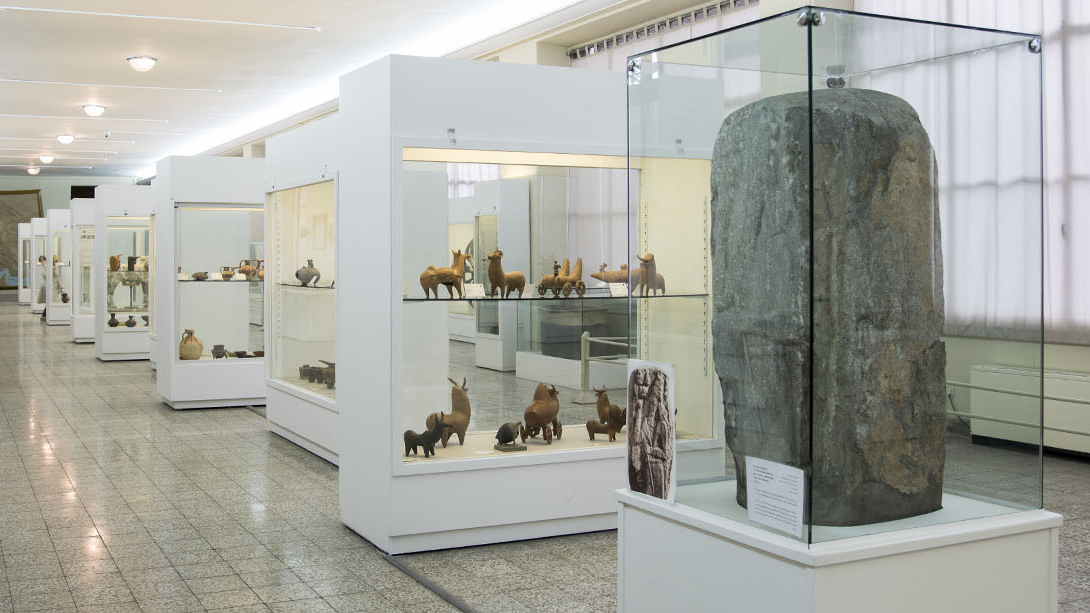
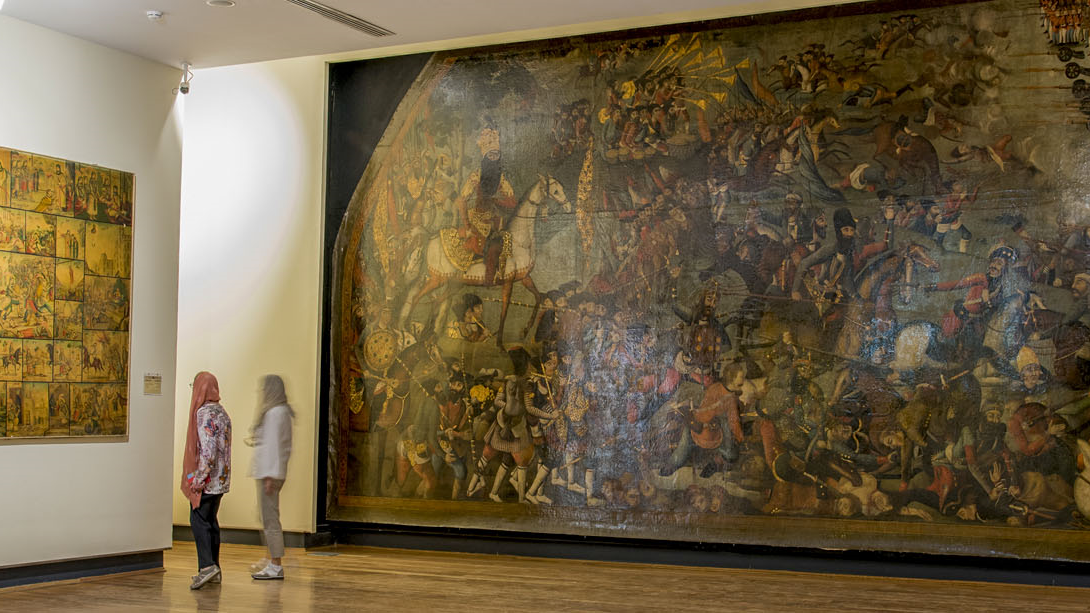





Choose blindless
Red blindless Green blindless Blue blindless Red hard to see Green hard to see Blue hard to see Monochrome Special MonochromeFont size change:
Change word spacing:
Change line height:
Change mouse type:



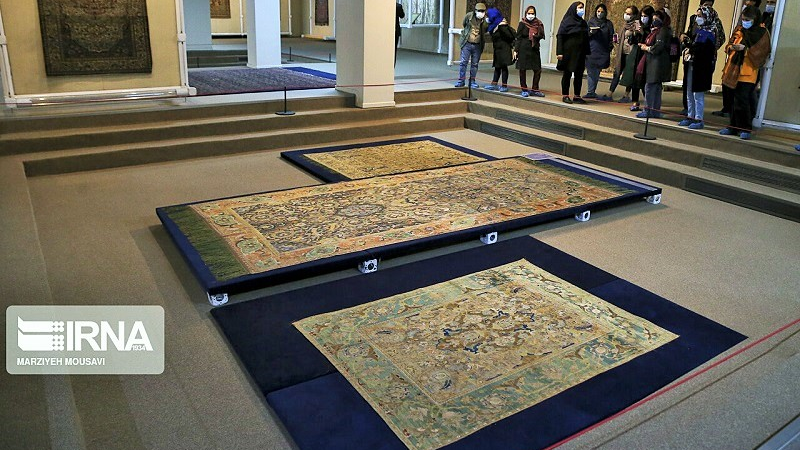
 ابرکوه_crop_3.jpg)
